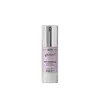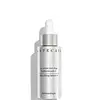What's inside
What's inside
 Key Ingredients
Key Ingredients

 Benefits
Benefits

 Concerns
Concerns

 Ingredients Side-by-side
Ingredients Side-by-side

Acetyl Sh-Heptapeptide-1
Skin ConditioningButylene Glycol
HumectantButyrospermum Parkii Butter
Skin ConditioningCamellia Sinensis Leaf Extract
AntimicrobialCaprylyl Glycol
EmollientCarbomer
Emulsion StabilisingCopper Tripeptide-1
Skin ConditioningDimethyl Mea
BufferingEthylhexylglycerin
Skin ConditioningGlycereth-26
HumectantGlycerin
HumectantGlycine
BufferingHexylene Glycol
EmulsifyingHibiscus Abelmoschus Extract
MaskingHydrogenated Lecithin
EmulsifyingHydrolyzed Soy Protein
HumectantLecithin
EmollientMalus Domestica Fruit Cell Culture Extract
Skin ConditioningMoringa Oleifera Seed Oil
EmollientPalmitoyl Tetrapeptide-7
Skin ConditioningPalmitoyl Tripeptide-1
Skin ConditioningPanthenol
Skin ConditioningPentylene Glycol
Skin ConditioningPhenoxyethanol
PreservativePolysorbate 20
EmulsifyingPropanediol
SolventRosa Centifolia Flower Water
Skin ConditioningRosa Centifolia Flower Oil
MaskingRosmarinus Officinalis Leaf Extract
AntimicrobialSodium Hyaluronate
HumectantSodium Hydroxide
BufferingSorbitol
HumectantTetrahexyldecyl Ascorbate
AntioxidantWater
Skin ConditioningXanthan Gum
EmulsifyingPhenethyl Alcohol
MaskingAcetyl Sh-Heptapeptide-1, Butylene Glycol, Butyrospermum Parkii Butter, Camellia Sinensis Leaf Extract, Caprylyl Glycol, Carbomer, Copper Tripeptide-1, Dimethyl Mea, Ethylhexylglycerin, Glycereth-26, Glycerin, Glycine, Hexylene Glycol, Hibiscus Abelmoschus Extract, Hydrogenated Lecithin, Hydrolyzed Soy Protein, Lecithin, Malus Domestica Fruit Cell Culture Extract, Moringa Oleifera Seed Oil, Palmitoyl Tetrapeptide-7, Palmitoyl Tripeptide-1, Panthenol, Pentylene Glycol, Phenoxyethanol, Polysorbate 20, Propanediol, Rosa Centifolia Flower Water, Rosa Centifolia Flower Oil, Rosmarinus Officinalis Leaf Extract, Sodium Hyaluronate, Sodium Hydroxide, Sorbitol, Tetrahexyldecyl Ascorbate, Water, Xanthan Gum, Phenethyl Alcohol
Rosa Damascena Flower Water
MaskingWater
Skin ConditioningGlycerin
HumectantButylene Glycol
HumectantMethyl Gluceth-20
HumectantImperata Cylindrica Root Extract
Skin ConditioningDiglycerin
HumectantHydroxypropyl Methylcellulose
Emulsion StabilisingPhenoxyethanol
PreservativePullulan
Xanthan Gum
EmulsifyingPlantago Lanceolata Leaf Extract
AntimicrobialEthylhexylglycerin
Skin ConditioningPPG-26-Buteth-26
Skin ConditioningPEG-40 Hydrogenated Castor Oil
EmulsifyingAcrylates/C10-30 Alkyl Acrylate Crosspolymer
Emulsion StabilisingPentylene Glycol
Skin ConditioningPorphyridium Cruentum Extract
Skin ConditioningCaprylyl Glycol
EmollientMaltodextrin
AbsorbentSodium Hydroxide
BufferingRosa Damascena Flower Oil
MaskingPelargonium Graveolens Oil
MaskingCitric Acid
BufferingTheobroma Cacao Seed Extract
AntioxidantPsilanthus Bengalensis Leaf Cell Culture Extract
Skin ConditioningSodium Hyaluronate
HumectantCarbomer
Emulsion StabilisingAcetyl Hexapeptide-8
HumectantCamellia Sinensis Leaf Extract
AntimicrobialRubus Idaeus Leaf Cell Culture
Skin ConditioningNicotiana Sylvestris Leaf Cell Culture
Skin ConditioningAcetyl Hexapeptide-38
Skin ConditioningN-Prolyl Palmitoyl Tripeptide-56 Acetate
Skin ConditioningCitronellol
PerfumingGeraniol
PerfumingLinalool
PerfumingRosa Damascena Flower Water, Water, Glycerin, Butylene Glycol, Methyl Gluceth-20, Imperata Cylindrica Root Extract, Diglycerin, Hydroxypropyl Methylcellulose, Phenoxyethanol, Pullulan, Xanthan Gum, Plantago Lanceolata Leaf Extract, Ethylhexylglycerin, PPG-26-Buteth-26, PEG-40 Hydrogenated Castor Oil, Acrylates/C10-30 Alkyl Acrylate Crosspolymer, Pentylene Glycol, Porphyridium Cruentum Extract, Caprylyl Glycol, Maltodextrin, Sodium Hydroxide, Rosa Damascena Flower Oil, Pelargonium Graveolens Oil, Citric Acid, Theobroma Cacao Seed Extract, Psilanthus Bengalensis Leaf Cell Culture Extract, Sodium Hyaluronate, Carbomer, Acetyl Hexapeptide-8, Camellia Sinensis Leaf Extract, Rubus Idaeus Leaf Cell Culture, Nicotiana Sylvestris Leaf Cell Culture, Acetyl Hexapeptide-38, N-Prolyl Palmitoyl Tripeptide-56 Acetate, Citronellol, Geraniol, Linalool
Ingredients Explained
These ingredients are found in both products.
Ingredients higher up in an ingredient list are typically present in a larger amount.
Butylene Glycol (or BG) is used within cosmetic products for a few different reasons:
Overall, Butylene Glycol is a safe and well-rounded ingredient that works well with other ingredients.
Though this ingredient works well with most skin types, some people with sensitive skin may experience a reaction such as allergic rashes, closed comedones, or itchiness.
Learn more about Butylene GlycolCamellia Sinensis Leaf Extract is derived from the leaves of the tea plant. Black tea, green tea, and oolong tea are all harvested from this plant.
This ingredient has many skin benefits:
This ingredient contains polyphenols, a strong antioxidant. Antioxidants help fight off molecules that damage skin cells.
On top of that, the antioxidants in green tea neutralize free-radicals from the sun. This gives the skin some extra UV protection, but should not replace sunscreen.
Many components of tea have anti-inflammatory properties.
Polyphenols and L-theanine help soothe the skin and reduce irritation. The caffeine in Camellia Sinensis Leaf Extract helps calm inflamed blood vessels.
Other compounds found in tea include: Vitamin Bs, linoleic acid, magnesium, calcium, iron, and zinc.
Research has shown both drinking Camellia Sinensis Leaf Tea and applying it to the skin can help boost skin elasticity and hydration. Studies also show using tea extract may reduce sebum, or oil, production.
Learn more about Camellia Sinensis Leaf ExtractCaprylyl Glycol is a humectant and emollient, meaning it attracts and preserves moisture.
It is a common ingredient in many products, especially those designed to hydrate skin. The primary benefits are retaining moisture, skin softening, and promoting a healthy skin barrier.
Though Caprylyl Glycol is an alcohol derived from fatty acids, it is not the kind that can dry out skin.
This ingredient is also used as a preservative to extend the life of products. It has slight antimicrobial properties.
Learn more about Caprylyl GlycolCarbomer is a polymer of acrylic acid. Its main role is to create a gel consistency.
A high amount of carbomer can cause pilling or balling up of products. Don't worry, most products contain 1% or less of carbomer.
Ethylhexylglycerin (we can't pronounce this either) is commonly used as a preservative and skin softener. It is derived from glyceryl.
You might see Ethylhexylglycerin often paired with other preservatives such as phenoxyethanol. Ethylhexylglycerin has been found to increase the effectiveness of these other preservatives.
Glycerin is already naturally found in your skin. It helps moisturize and protect your skin.
A study from 2016 found glycerin to be more effective as a humectant than AHAs and hyaluronic acid.
As a humectant, it helps the skin stay hydrated by pulling moisture to your skin. The low molecular weight of glycerin allows it to pull moisture into the deeper layers of your skin.
Hydrated skin improves your skin barrier; Your skin barrier helps protect against irritants and bacteria.
Glycerin has also been found to have antimicrobial and antiviral properties. Due to these properties, glycerin is often used in wound and burn treatments.
In cosmetics, glycerin is usually derived from plants such as soybean or palm. However, it can also be sourced from animals, such as tallow or animal fat.
This ingredient is organic, colorless, odorless, and non-toxic.
Glycerin is the name for this ingredient in American English. British English uses Glycerol/Glycerine.
Learn more about GlycerinPentylene glycol is typically used within a product to thicken it. It also adds a smooth, soft, and moisturizing feel to the product. It is naturally found in plants such as sugar beets.
The hydrophilic trait of Pentylene Glycol makes it a humectant. As a humectant, Pentylene Glycol helps draw moisture from the air to your skin. This can help keep your skin hydrated.
This property also makes Pentylene Glycol a great texture enhancer. It can also help thicken or stabilize a product.
Pentylene Glycol also acts as a mild preservative and helps to keep a product microbe-free.
Some people may experience mild eye and skin irritation from Pentylene Glycol. We always recommend speaking with a professional about using this ingredient in your routine.
Pentylene Glycol has a low molecular weight and is part of the 1,2-glycol family.
Learn more about Pentylene GlycolPhenoxyethanol is a preservative that has germicide, antimicrobial, and aromatic properties. Studies show that phenoxyethanol can prevent microbial growth. By itself, it has a scent that is similar to that of a rose.
It's often used in formulations along with Caprylyl Glycol to preserve the shelf life of products.
Sodium Hyaluronate is hyaluronic acid's salt form. It is commonly derived from the sodium salt of hyaluronic acid.
Like hyaluronic acid, it is great at holding water and acts as a humectant. This makes it a great skin hydrating ingredient.
Sodium Hyaluronate is naturally occurring in our bodies and is mostly found in eye fluid and joints.
These are some other common types of Hyaluronic Acid:
Learn more about Sodium HyaluronateSodium Hydroxide is also known as lye or caustic soda. It is used to adjust the pH of products; many ingredients require a specific pH to be effective.
In small amounts, sodium hydroxide is considered safe to use. However, large amounts may cause chemical burns due to its high alkaline.
Your skin has a natural pH and acid mantle. This acid mantle helps prevent harmful bacteria from breaking through. The acid mantle also helps keep your skin hydrated.
"Alkaline" refers to a high pH level. A low pH level would be considered acidic.
Learn more about Sodium HydroxideWater. It's the most common cosmetic ingredient of all. You'll usually see it at the top of ingredient lists, meaning that it makes up the largest part of the product.
So why is it so popular? Water most often acts as a solvent - this means that it helps dissolve other ingredients into the formulation.
You'll also recognize water as that liquid we all need to stay alive. If you see this, drink a glass of water. Stay hydrated!
Learn more about WaterXanthan gum is used as a stabilizer and thickener within cosmetic products. It helps give products a sticky, thick feeling - preventing them from being too runny.
On the technical side of things, xanthan gum is a polysaccharide - a combination consisting of multiple sugar molecules bonded together.
Xanthan gum is a pretty common and great ingredient. It is a natural, non-toxic, non-irritating ingredient that is also commonly used in food products.
Learn more about Xanthan Gum